Title: Arab Contributions to Science during the Middle Ages
Preservation and translation of knowledge:
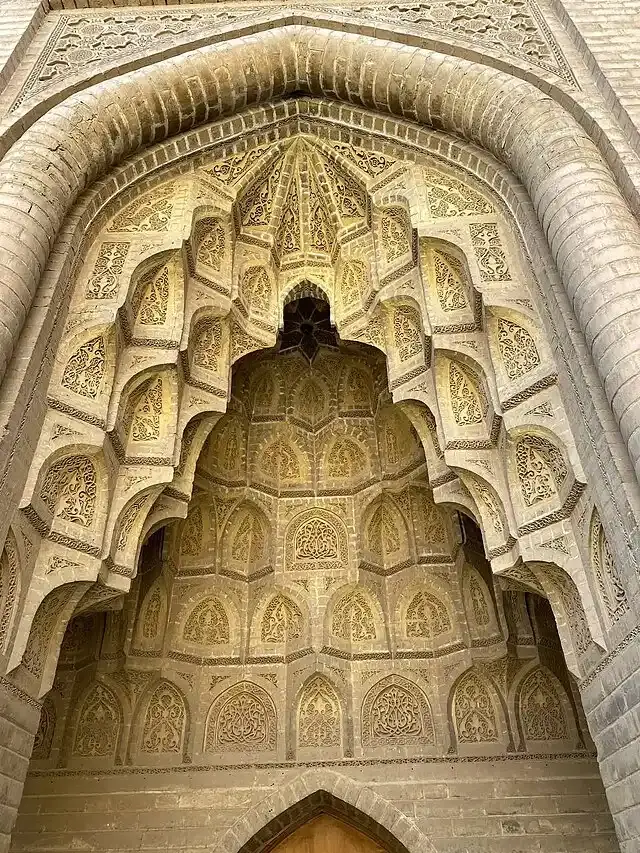
Preservation and translation of knowledge:
Show key points
- The House of Wisdom in Baghdad played a crucial role in preserving and translating ancient Greek, Roman, Persian, and Indian texts into Arabic, making them accessible to future generations.
- Arab chemists such as Jabir ibn Hayyan and Al-Razi pioneered foundational chemical techniques and discoveries that influenced both medieval and modern science.
- Islamic medicine built upon Greek and Roman knowledge, and physicians like Ibn Sina and Al-Zahrawi authored comprehensive medical encyclopedias that guided Western medicine for centuries.
- ADVERTISEMENT
- Early Muslim contributions to pharmacy included the development of organized pharmacies, production of medicinal substances, and extensive pharmacopeias like Ibn al-Bitar’s work.
- Physics saw major advancements through the experimental work of scholars like Ibn al-Haytham in optics and Al-Biruni in mechanics and fluid dynamics.
- Mathematicians such as Al-Khwarizmi and Al-Battani significantly contributed to algebra, trigonometry, and introduced the decimal system to Europe.
- Arab scientists advanced astronomy and geography through precise observations, development of instruments, and detailed maps, influenced by both religious and navigational needs.
Played at the center of the medieval intellectual renaissance, the House of Wisdom in Baghdad served as a center for scholarly activities, as manuscripts from ancient civilizations such as Greece, Rome, Persia and India were accurately translated into Arabic. This translation movement, often called the Arab Renaissance, played a pivotal role in preserving the wisdom of antiquity and making it accessible to future generations. Prominent translators such as Hunayn ibn Ishaq and Thabit ibn Qurra have been instrumental in bridging the gap between different cultures and preserving the rich heritage of human knowledge.
Recommend
Chemistry:
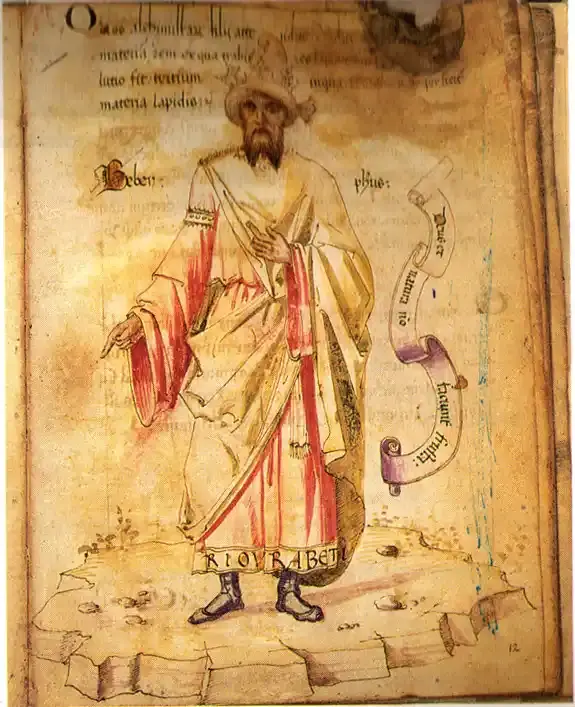
The early stages witnessed the development of general frameworks for chemistry by a number of early ones, most notably Jabir bin Hayyan, Al-Razi and Abu al-Qasim al-Qurtubi al-Maghriti. Ibn Hayyan was born in 702 CE and is known in the West as Jabir, the father of modern chemistry. Al-Jabir Ibn Hayyan's Great Book of Properties was considered the Bible of Chemistry until the eighteenth century. Bin Hayyan invented a type of paper that resisted fire, and ink that could be read at night. He also identified many new products, including alkali, acids, salts, paints and greases. Caustic soda and many salts such as sulfates were also prepared. Among his other books,. "The Great Book of Chemical Properties", "Scales", "Scales and Measures", "Mood", "Chemical Composition", "Pigments" and "Dyes". Bin Hayyan's influence can be traced back to all the history of chemistry and chemistry in Europe, and even in modern chemistry. Abu Bakr Muhammad ibn Zakariya al-Razi, who was known as al-Razi in the West, was one of the most prolific Muslim physicians, writing about 200 books, including Kitab al-Mansuri and al-Hawi, an encyclopedia of medicine in 20 volumes. In his book The Secret of Secrets, he classified natural substances into plant and animal substances, while other chemists classified substances into three categories, bodies, spirits, and spirits. Al-Razi is considered the father of the founder of modern chemistry, who believed in experiment and concrete evidence, and was interested in the medical uses of chemical compounds. Finally, Abu al-Qasim al-Qurtubi al-Mughriti, a Spanish Muslim chemist comes from Madrid (950-1007). He is particularly famous for his work "The Status of the Wise". Among other things, he was given formulas and instructions for the purification of precious metals, and they were assembled in 1009, two years after his death. In this work, al-Maghriti was the first to prove the principle of mass conservation, eight centuries before the Frenchman Lavoisier. Terms such as alcohol and alkali are known to originate in Arabic. Moreover, Arab scientists have made notable contributions to practical chemistry, including advances in the glass and metal industry and dyeing techniques. Their innovative experiences and technologies have not only enriched different industries, but have also paved the way for further scientific research and technological innovation.
Medicine:
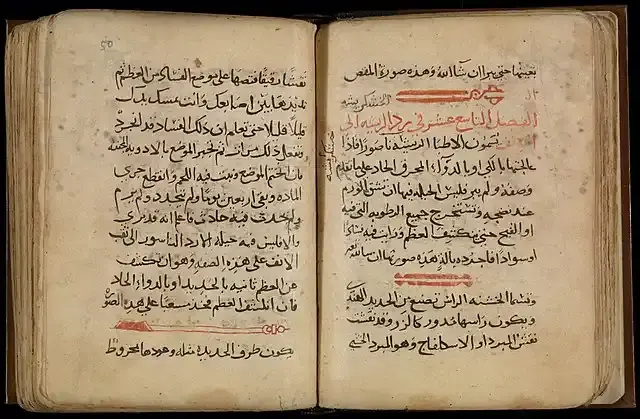
Medicine was an essential part of medieval Islamic culture. Islamic medicine relied on the heritage of Greek and Roman physicians and scientists, and Muslim physicians were influenced by the legacy of Galen and Hippocrates, and by the Greek scholars of Alexandria. Islamic scholars translated their voluminous writings from Greek into Arabic and then added to them and collected them into encyclopedias and summaries. By reading Arabic literature, Western physicians learned Greek medicine and adopted Islamic traditions and translations. For example, Ibn Sina's Canon of Medicine (Encyclopedia of Medicine in Five Books, which provided a clear and structured summary of all medical knowledge over some 700 years) was translated into Latin and published in manuscript and print. Besides Ibn Sina, other physicians such as al-Razi, al-Zahrawi, Ibn al-Nafis, al-Ghazali, and others came. Al-Razi's books amounted to about 200 books, the most important of which were Al-Mansouri's book in ten volumes, and Al-Hawi's book in twenty volumes, and he served as director of the Baghdad hospital for a long time. Al-Zahrawi followed in the footsteps of Al-Razi, and wrote his book Al-Tasrif for those who were unable to write, the reference in surgery, which included many surgeries and the tools used in them.
Pharmacy:
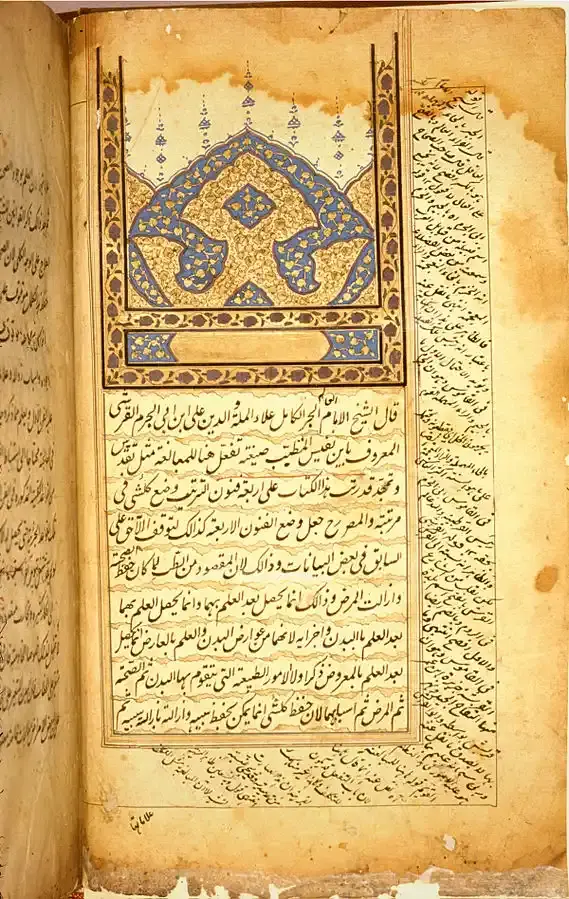
The work of Arab and Muslim scientists in pharmacy has been linked to their work in chemistry, especially the research and manufacture of drugs. Thus, camphor, alum, and amber were used to heal diseases, and the first pharmacy for medicines appeared in Baghdad in the ninth century, and the pharmacy profession was organized and supervised, and the names of pharmacists such as Al-Biruni, Abu Mansour Al-Muwafaq, Abu Al-Hassan Ali bin Rabin Al-Tabari, the author of the book Firdaws Al-Hikma, and the Syriac Bakhtishua family, where their chief George worked for Caliph Al-Mansur, then his son Jibril worked for Caliph Harun Al-Rashid, and he served the management of the medical school due to his skill in medicine. Bakhtishua ibn Jibril followed him, followed by Jibril ibn Abdullah ibn Bakhtishua. Arab scientists conducted extensive research on plants and medicinal substances, and compiled extensive pharmacopoeias for the benefit of humanity. Ibn al-Bitar, a distinguished botanist and pharmacist, authored the huge book "The Collector of Single Medicines", which included more than 1,400 medicinal plants and their healing properties. His work has not only improved drug knowledge, but has also facilitated the development of new treatments and drugs.
It is noted from the above the integration and exchange of knowledge in the fields of chemistry, medicine and pharmacy, and the multiplicity of experiences of some scientists and their knowledge of more than one discipline.
Physics:

In the field of physics, Arab scientists developed practical and experimental aspects in the study of sound, light and mechanics, and the name of Ibn al-Haytham, who was interested in the science of light and published the book of views, which remained a reference in the properties of light and vision for about six centuries. Al-Kindi also studied the theory of vision of Greek scientists and added to it. In the field of solid bodies, Abu Al-Rayhan Al-Biruni was interested in determining the specific weights of a number of precious stones, setting the rule that stipulates that the specific weight is proportional to the volume of water it displaces, and explaining the exit of water from wells and springs based on the theory of pots. In the field of kinematics and the science of static fluids, Abu al-Fath al-Khazni excelled, who laid the foundations of the theories of inclination, impulse and gravity, worked on determining the specific weights of solid bodies and liquids, wrote the book The Balance of Wisdom, and studied the driving force of air and water. On the other hand, Arab scholars dealt with the basics of the laws of motion and movement.
Math:
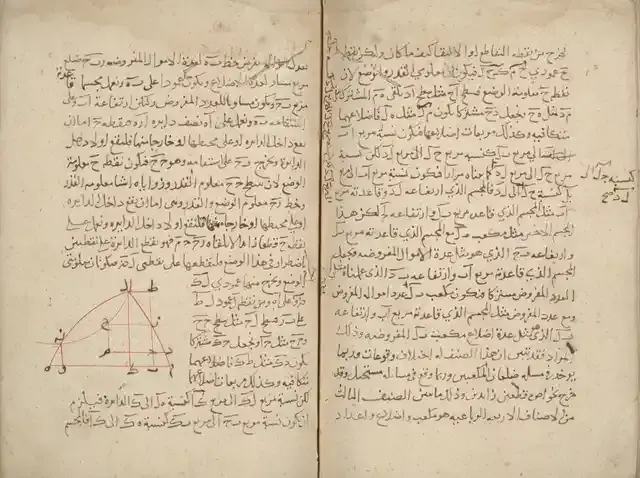
Arab scientists also contributed to the development of mathematics, and here their contribution to the development of numbers and arithmetic, the introduction of Arabic numbers and zero in the decimal counting system, and Europe's adoption of these numbers emerges. The scholar Muhammad ibn Musa al-Khwarizmi is credited with the development of algebra and the writing of algebra and interview at the beginning of the ninth century, and the spread of the terms algebra and algorithms in Latin languages. He added Mohammed Al-Karaji, Al-Samual bin Yahya Al-Maghribi and Omar Khayyam to the Al-Khwarizmi school. In the field of triangles, reference is made to the contributions of Muhammad ibn Jabir ibn Sinan al-Batani, Abu al-Wafa al-Buzjani, Ibn Yunus al-Masri, Ibn al-Haytham and al-Biruni in introducing the terms sine, cosine, tangent and tangent. On the other hand, Arab scholars, such as Abu Sahl al-Quhi, studied and developed the cuts based on the translation of the works of Greek scholars such as Ptolemy, Euclid and Apollonius.
Astronomy:
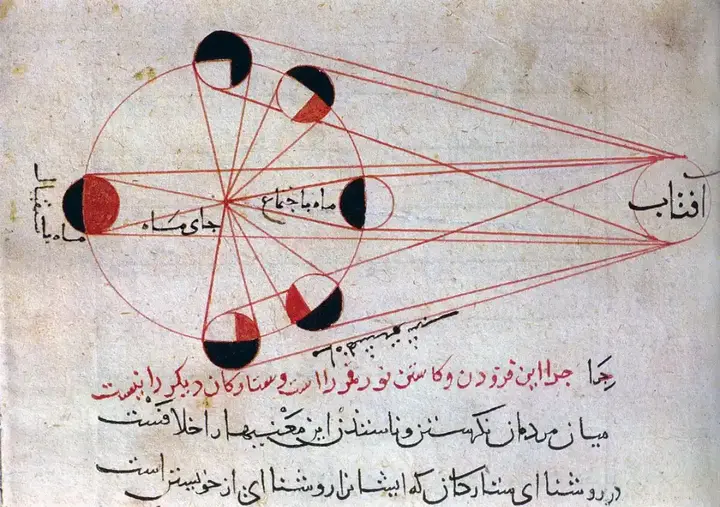
Arab scientists were interested in astronomy for religious reasons related to determining prayer times and lunar months on the one hand, and to travel on land and sail the seas on the other. They have developed multiple observation and monitoring tools to follow planets and stars such as astrolabes, quarters, and equatorial torque meters. They also drew up tables and charts for the results of their measurements of the motion of the Sun, Moon and planets. The first important book of Muslim scholars was al-Khwarizmi's Zij al-Sindh in 830. After that, Ahmed bin Abdullah Al-Marwazi made several observations at the Shamasiya Observatory in Baghdad, estimated a number of geographical and astronomical values that approached contemporary measurements, and collected its results in the book Dimensions and Bodies. Al-Batani, also known as Alpatgnios, recorded astronomical observations with unprecedented accuracy and the length of the solar year. Thus, his treatise "De Motu Stellarum" (On the motion of stars) became the cornerstone of astronomical knowledge, influencing later European astronomers.
Geography and maps:
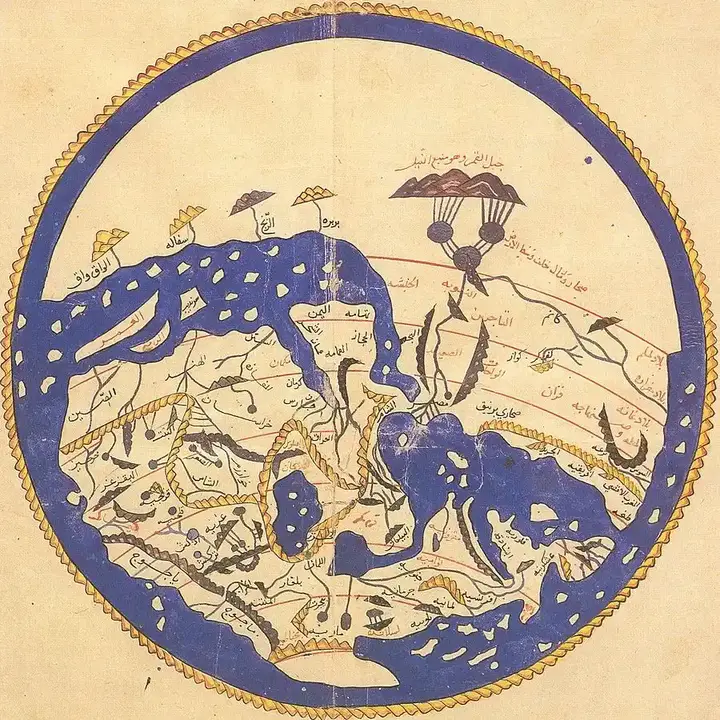
Since ancient times, Arabs have been interested in locating places in the vast Arabian desert based on landmarks visible by day and stars by night. Yaqut al-Hamawi's Dictionary of Countries is itself a geographical encyclopedia. As the Arab state expanded and trade flourished, Arab scientists worked on mapping and studying the globe. Al-Khwarizmi's "The Image of the Earth" is considered one of the most famous early geographical works.
Cultural exchange and influence

The Arab world served as a vital center for cultural exchange, where the ideas of diverse civilizations met and flourished. Arab scholars engaged in extensive intellectual dialogues with Byzantine, Persian, Indian, and Chinese scholars, facilitating the exchange of knowledge across geographical and cultural boundaries. This cultural exchange not only enriched the medieval intellectual landscape, but also fostered a spirit of openness, tolerance and curiosity that transcended sectarian and ethnic divisions.
Legacy and Impact:
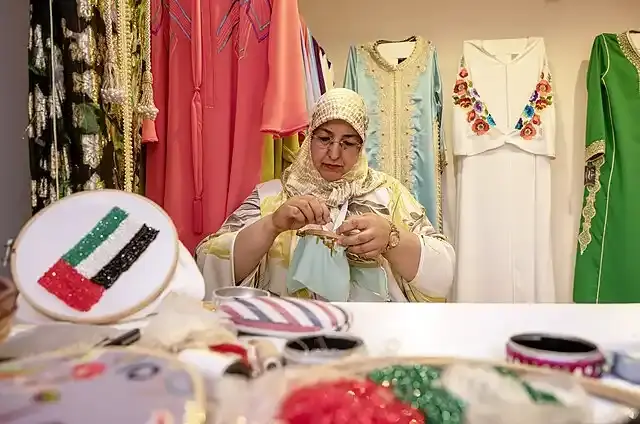
The contributions of Arab scientists during the Middle Ages left a lasting legacy that still resonates in the annals of human history. Their relentless pursuit of knowledge, scientific research and cultural exchange laid the foundation for the Renaissance and the subsequent scientific revolution in Europe. The works of Arab scholars, preserved and published through translations, have inspired generations of thinkers, scientists, and philosophers, and contributed to shaping the intellectual landscape of the modern world. When we look at their heritage, it becomes clear that Arab scientists in the Middle Ages were not only the guardians of knowledge, but also pioneers who propelled humanity towards enlightenment and progress.

The role of Arab scientists during the Middle Ages was pivotal in shaping the course of human civilization. Their contributions in various disciplines, including mathematics, astronomy, medicine, chemistry and philosophy, served as catalysts for intellectual renaissance and cultural exchange. As we celebrate their achievements, let us recognize the profound impact of their endeavors and strive to emulate the spirit of research, openness and innovation they enjoy in our pursuit of knowledge and progress. By shedding light on the past, we gain insights that can guide us towards a brighter future for humanity.








